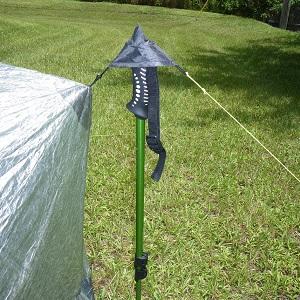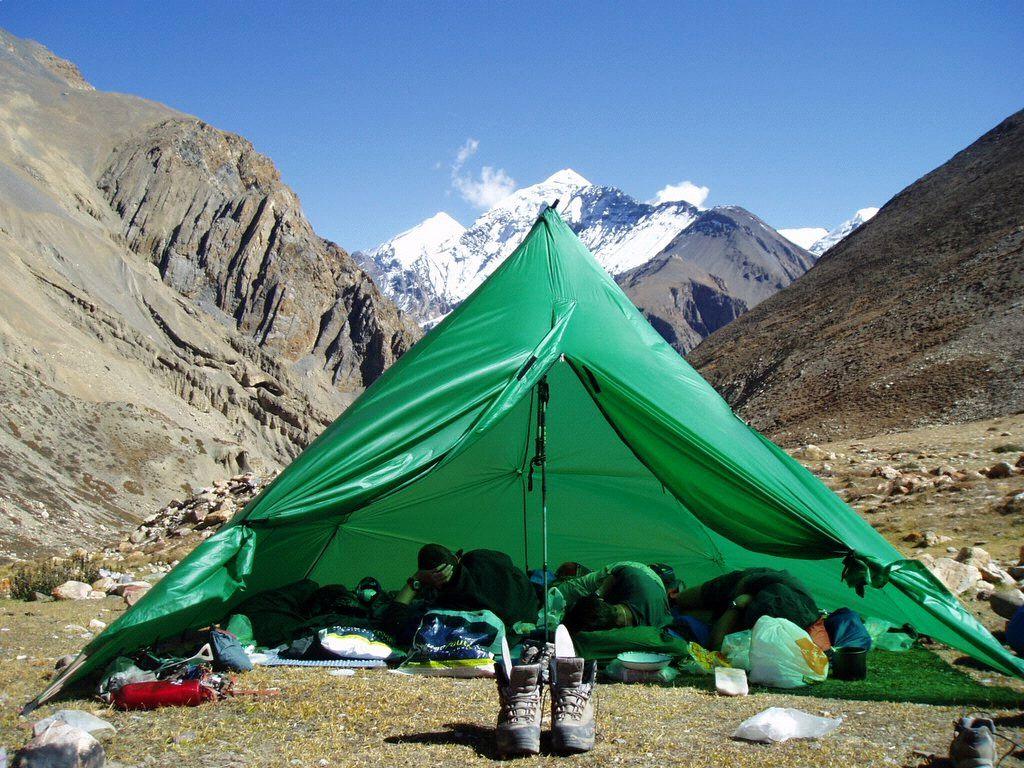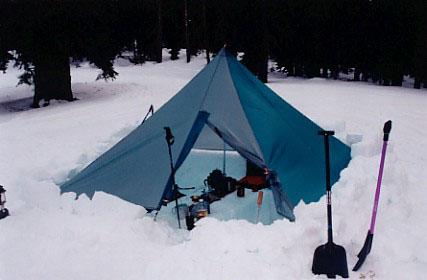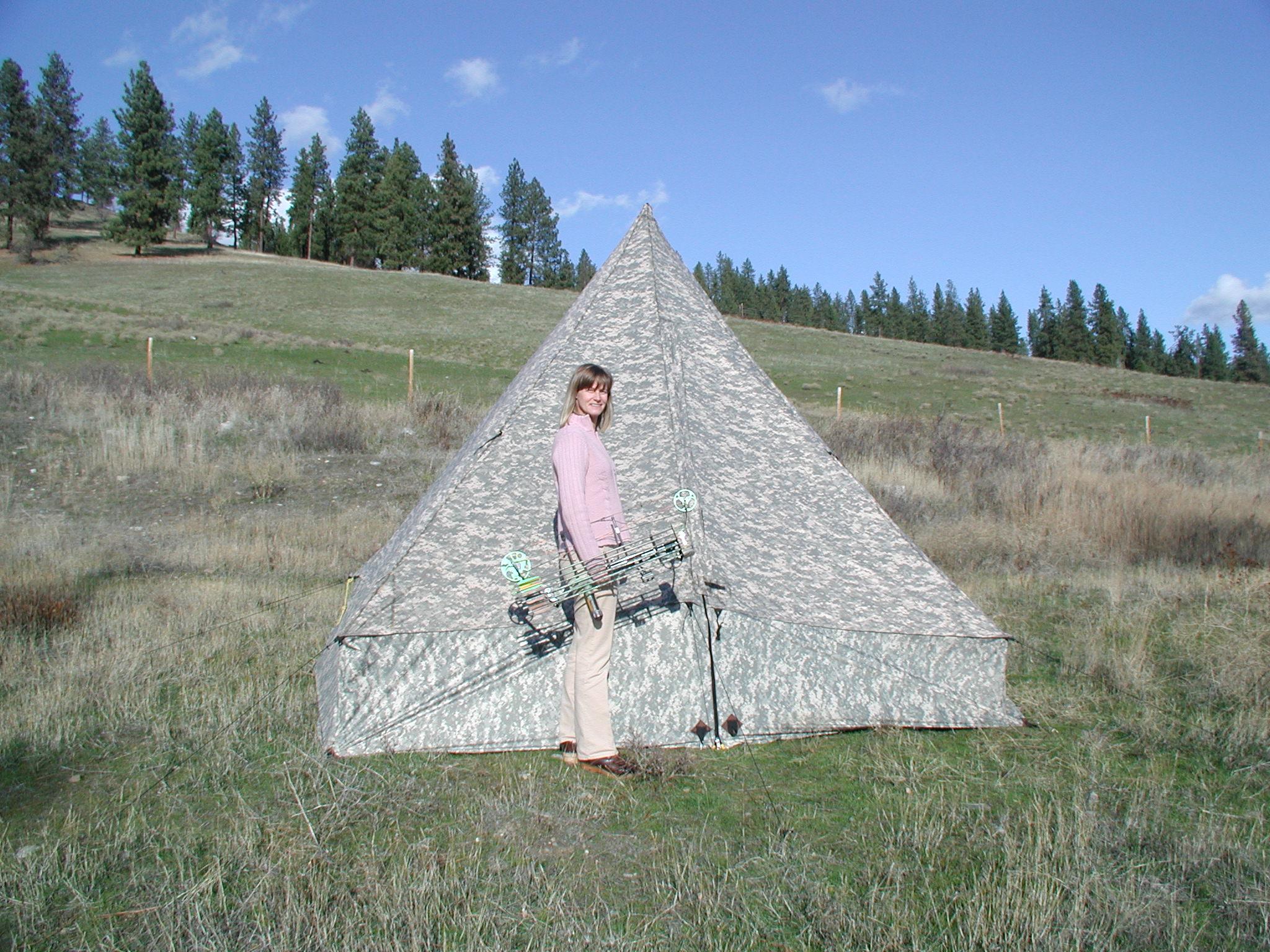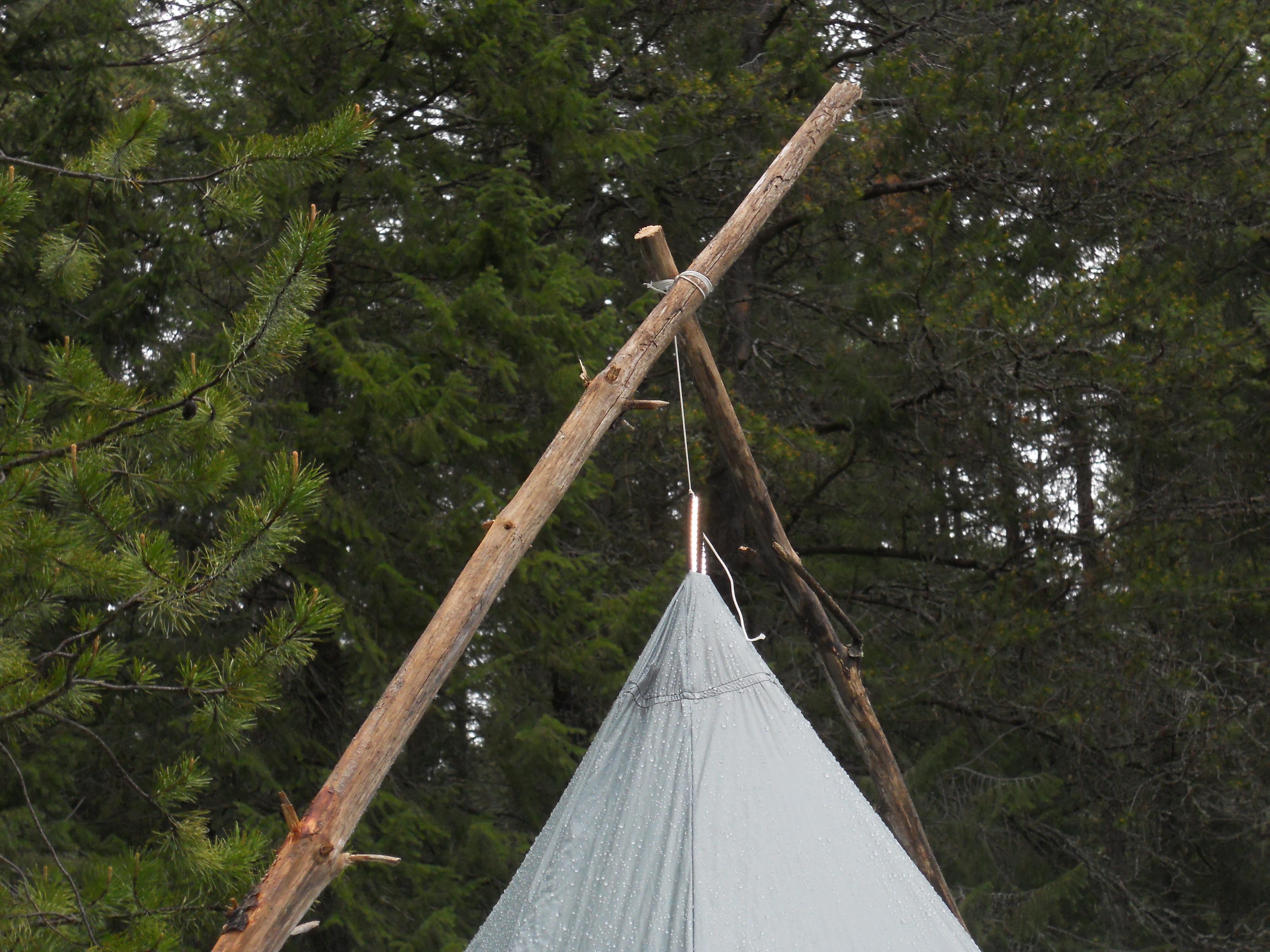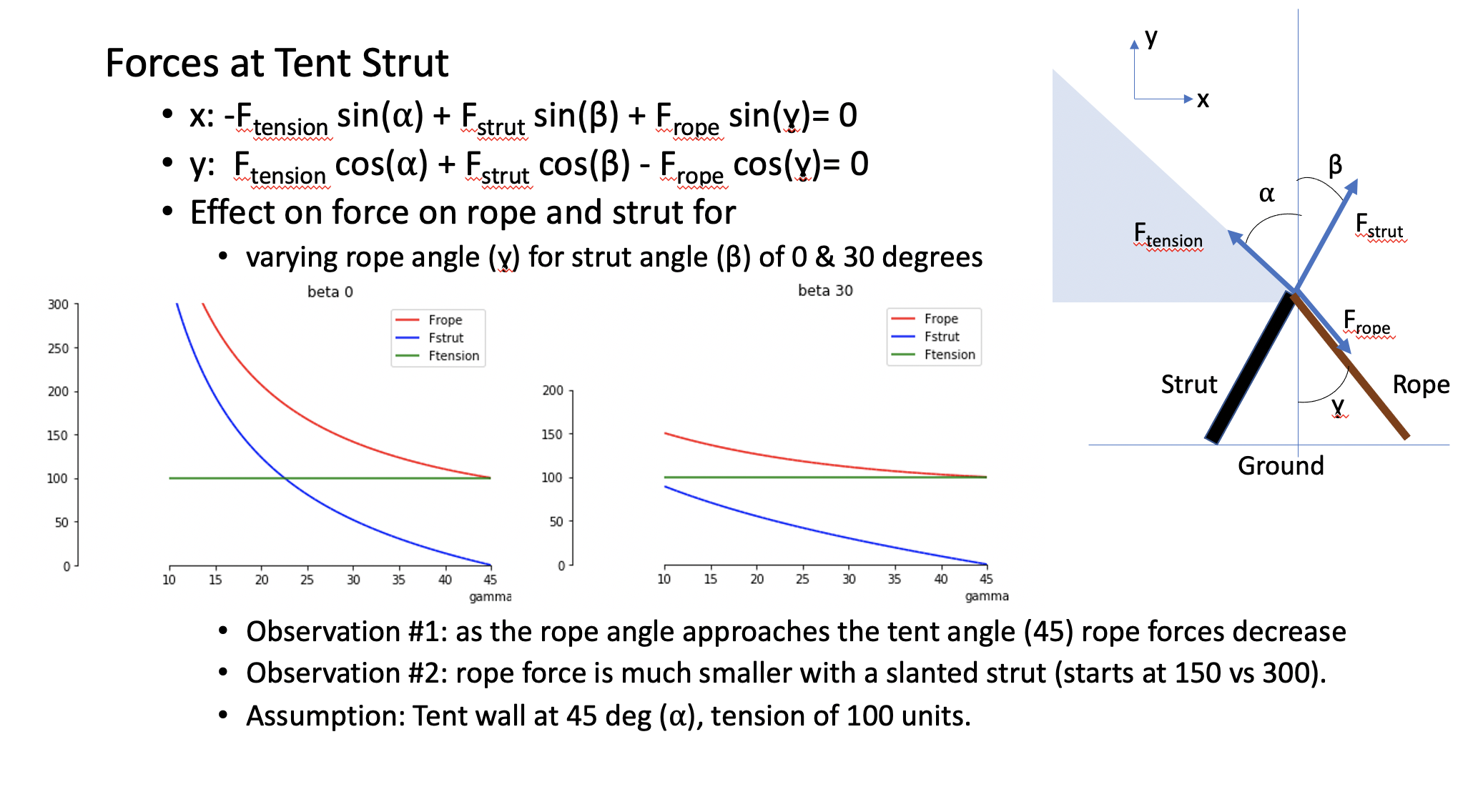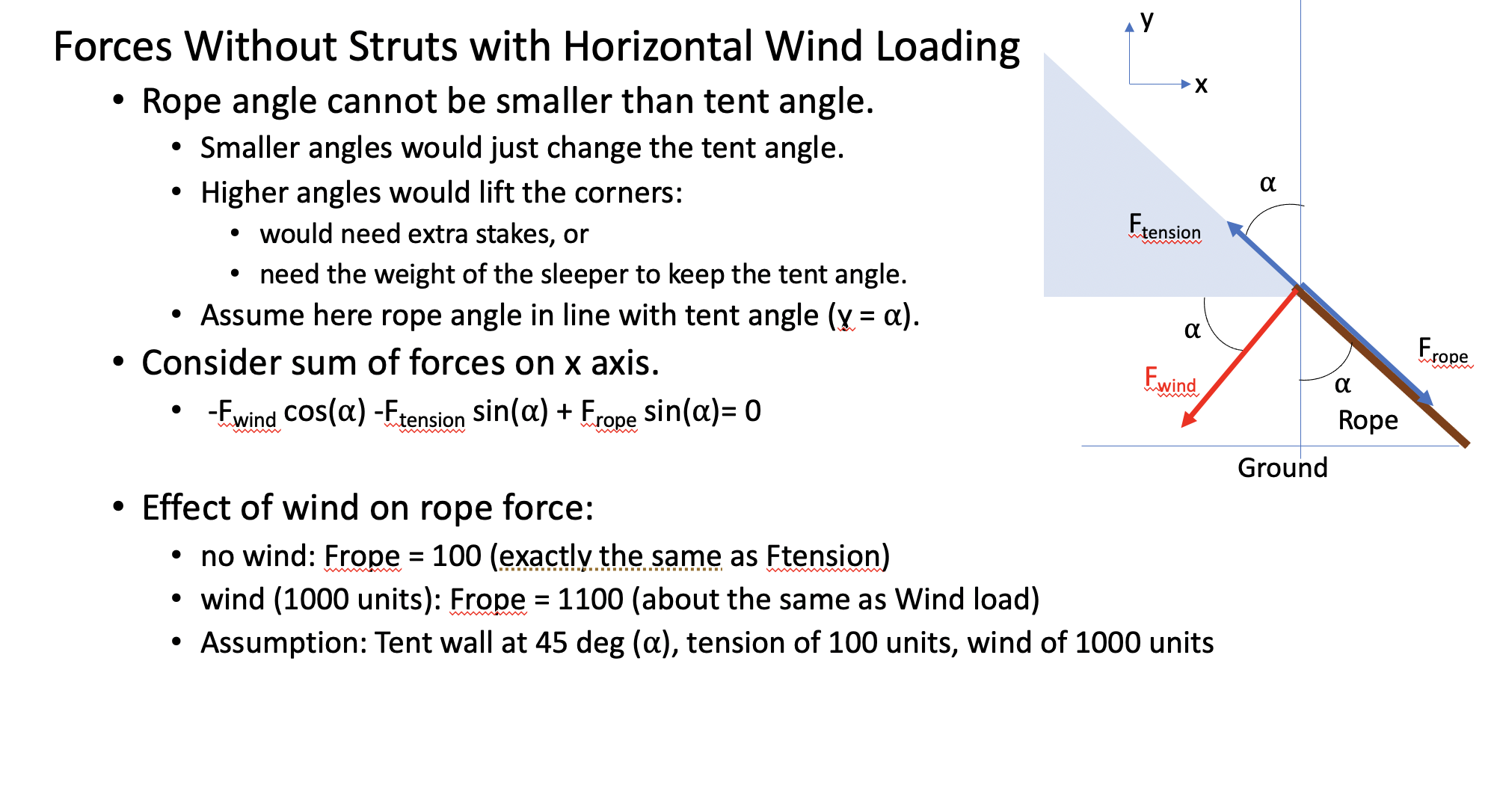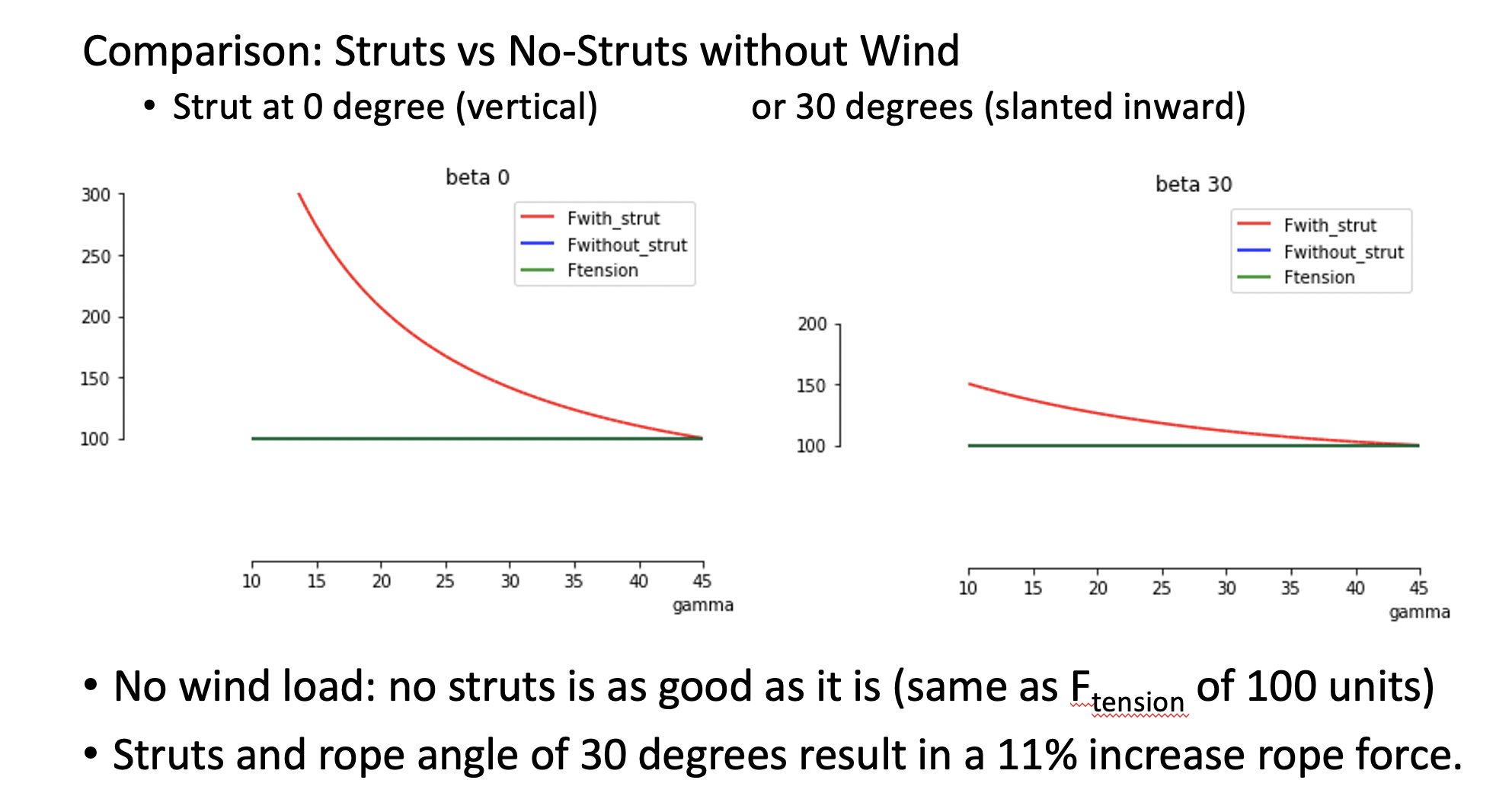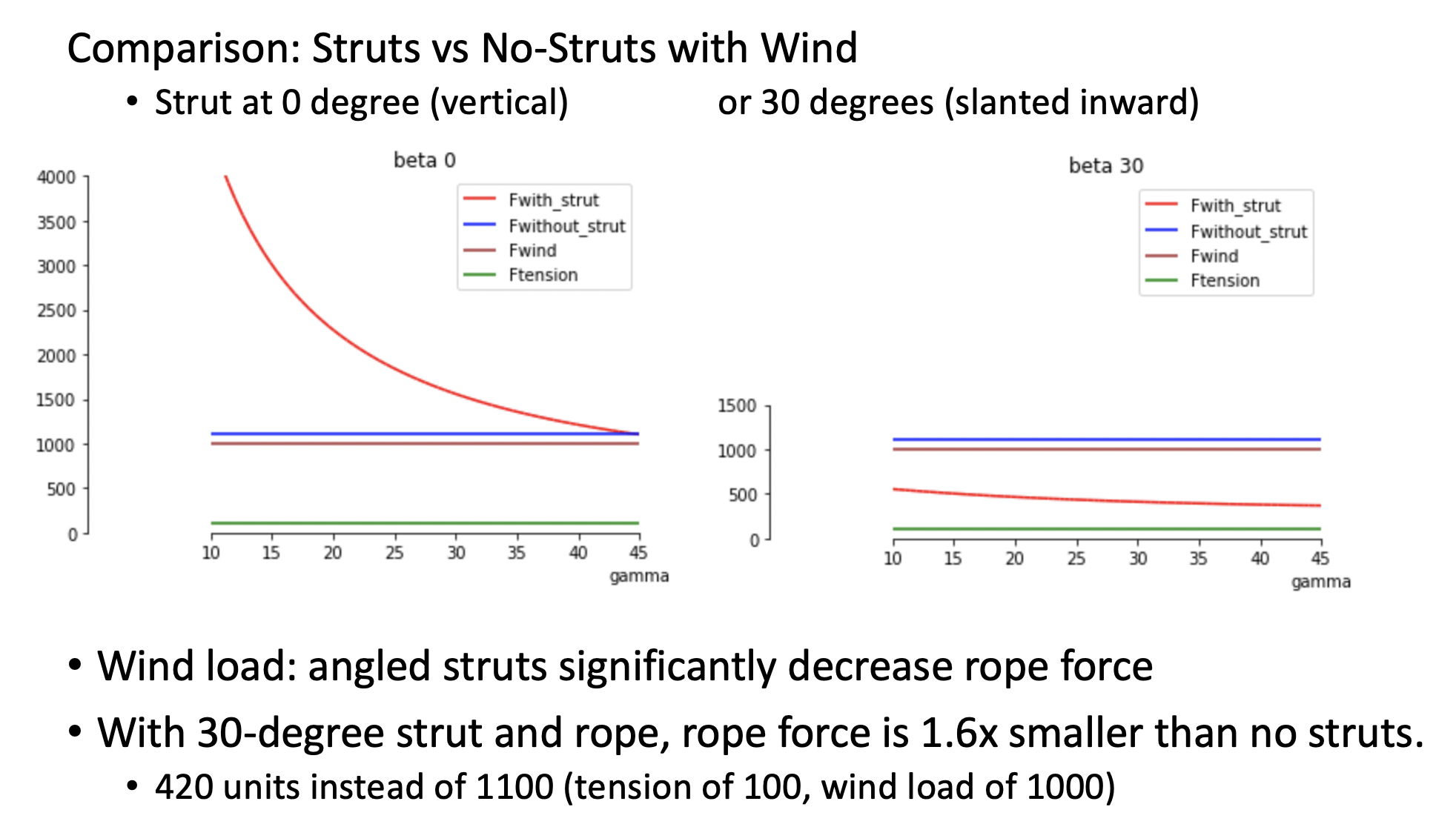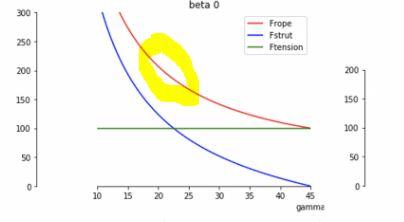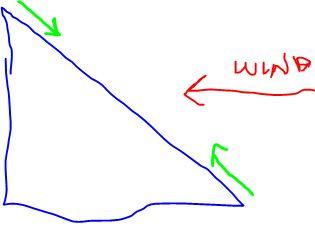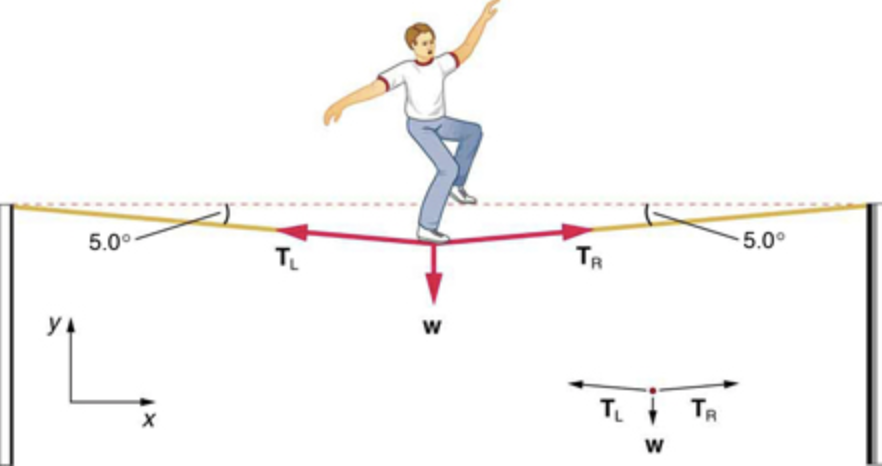Topic
So I have a new Tent plan for 2021…input welcome
Forum Posting
A Membership is required to post in the forums. Login or become a member to post in the member forums!
Home › Forums › Gear Forums › Gear (General) › So I have a new Tent plan for 2021…input welcome
- This topic has 176 replies, 35 voices, and was last updated 3 years, 11 months ago by
 Roger Caffin.
Roger Caffin.
-
AuthorPosts
-
Dec 9, 2020 at 9:16 pm #3688074
“is there an upper size limit to tents like the X-Mid and Stratospire?”
Yeah. You’d run into a problem with the amount of structure relative to the size of the tent. If you tried to make ….uhh….let’s say a 10P version, then you’d have a large area for the tent (20 feet x 8 feet perhaps) but not much structure to support that large canopy. So you’d have huge unsupported panels and still not much volume in the tent. Even if you spaced the poles as far apart as you could, there still wouldn’t be much volume to it and the walls would be extremely shallow sloped. You can just keep making it wider as Zpacks does (Duplex -> Triplex) but at some point the canopy is getting so large that you’ve got issues with the greater forces it would collect (e.g snowloads).With a tent you need an appropriate amount of structure for the size of it and the intended use. Guylines can add a bit of structure, but there’s no real replacement for rigid support (tent poles, trekking poles, struts). With a 1P or 2P tent you can use a single trekking pole design but it’s not that much structure, which is why adding as second pole or struts often makes sense. It gives smaller panels, more volume, and more support. If you’re carrying a second pole anyways, I think adding it makes a lot of sense.
I don’t think you need to go beyond 2 poles for a 1P tent. For a 2P tent I think two poles work pretty well. One is a stretch. Two plus a bit more (guylines or struts) can be good. But going to 3 or 4 poles probably isn’t necessary. Once you get up to 3P and beyond, I think you want to start thinking seriously about >2 trekking poles. Or if that’s not practical because the design ends up too complicated or users don’t want to have to carry that many poles, then you look to traditional tent poles. Unless you’re making a fair weather tent – the you can just keep moving those poles further apart and accept the loss in stormworthyness.
All of that depends on how stormworthy you want the tent to be. For a 4 season mountaineering tent you really want a robust amount of structure. The only reason single pole mids work here is because they’re so low volume that the stress the need to support is much lower. That’s an option, but many people want a higher volume tent (e.g. more headroom) which means more structure to support that volume.
You could make a 3P version of either of these tents. It would mostly work, but (1) the 3P market is a lot smaller, and (2) another geometry might be better.
Dec 9, 2020 at 9:20 pm #3688075“Why couldn’t you just sew, on the outside, a tieout point or whatever they’re called at the same spot the top of a strut on the inside would be? “
As Roger said, it works but could collapse because you’re pulling out horizontally but don’t have any upward pull to counteract snowloads and big gusts.What you could do is tie the guyline up to something like up and over your trekking pole. That works but it’s basically adding a strut – only an external one – so it hasn’t really solved anything.
 Dec 9, 2020 at 9:34 pm #3688078
Dec 9, 2020 at 9:34 pm #3688078^^^ photo
And it is a lot more wobbly.
CheersDec 10, 2020 at 3:08 am #3688092Somehow, got sucked into the thread, and then it all went sideways. Am sorry that Henry timed out, because he has a depth of experience that is impressive.
With the first iteration of the Moment, he added a pair of carbon struts at each end in a triangular configuration by inserting them into internal sleeves made with light webbing. The triangular strut configuration was not new to me. I’d seen it used in many tents, even lower priced Eureka! tents, to raise the ends of a tent in order to create more head and foot room, always a good idea, especially when so many are drawn to single wall tents. I’ve never understood the appeal of Hilleberg tunnels with all that useless space where the walls slope closely down to the ground. Like living in an attic under a slightly sloped roof.
But early on the struts were commonly placed in light fabric pole sleeves, which broadly distribute force with a minimal weight penalty. If the sleeves were on an inner tent, the sleeves were wider to create more air space under the outer. If the sleeves were on an outer, they could be narrower, with even less of a weight penalty, and less “wobbly.”
On the stake side of the pole sleeves, and instead of a cord arrangement, there would be a half cone-shaped fabric panel, and each stake would go into the ground just beyond the point of the half cone. The cones would have to be cut and shaped very carefully to remain taut, distributing the force from the stakes evenly. The struts could be fiberglass, carbon or prebent alloy tube, and bowed outward to make a gothic arch, not just a simple triangle (a gothic arch is one that rises to a point at its top center). All of this increased space and minimized weight; so wondered why TT would put the struts into sewn-in webbing that was quite heavier than fabric pole sleeves, and use cordage instead of a light fabric cone-shaped pull-out, that also deflected wind. Maybe the pitch-lock’s cord adjustments make that careful shaping of a fabric half-cone unnecessary.
But found that early versions of the ‘pitch-lock’ were easy to tighten, and produced a quick and taut pitch. But did make some modifications: Lighter filament wound carbon shafts replaced the struts, and the inner webbing sleeves were modified to allow quicker insertion and removal. The original carbon struts went into carbon poles for a mod to m’lady’s MSR Hubba (waste not, want not). With the modifications, the set up for the Moment went just as fast as the older and more common design, making me a happy camper who could easily store the struts in the pole bag, where they were protected inside the rolled sleeping pad.
Since then, I gather that the pitch-locks have been refined, and become key to improving a number of Tarptents, just as the older fabric sleeve design did for earlier tents. With the proviso that there are different ways to incorporate struts into a design that performs the functions of a pitch-lock, I think that the advantages over a tent without them are obvious, and were expressed well by Henry. If the design were to create anything close to vertical pull on a stake, then see no reason why the design could not be modified.
So I think there is a danger that we can get a bit amateurish and long-winded about these issues. After all, how many of us have doctorates in mechanical engineering. The founder of Warmlite, who was an aeronautical engineer, may not have had a doctorate. He did say though that tent design is a “form of insanity,” meaning I think that the complexities of it can drive you mad.
Add to that a situation where many on BPL are competing to promote products, and we may all be driven mad, especially if we are talking about tent design. That being the case, this may be a situation that can strain sanity, and we should cling tightly to humility. That works best if we are capable of it, though it can be a challenge.
Dec 10, 2020 at 5:59 am #3688100You could make a 3P version of either of these tents. It would mostly work, but (1) the 3P market is a lot smaller, and (2) another geometry might be better.
Very good explanation; thank you.
Dec 10, 2020 at 10:49 am #3688126some customer photos of Mids.
Himalayan Trekking with 11×11 8′. Customer used removable tarp clamps to vary height of side pullouts depending on wind. You can see one centered in the back. Also using trekking poles for center pole.

Shallow 10x10x5.5′ dug down into snow for more room. Notice Cooking bench.
 Dec 10, 2020 at 10:57 am #3688129
Dec 10, 2020 at 10:57 am #368812910×10′ mid with extra side walls, Blackout light proof interior coated with Camo for a stealthy spike camp.
No struts on side walls. Not wobbly as shown. If correct sized poles as struts on the exterior at the corners were added, that wouldn’t make it less stable, but would tidy up the pitch a bit at the cost of added weight (tho one could make use of downed limbs for that purpose).
 Dec 10, 2020 at 11:05 am #3688130
Dec 10, 2020 at 11:05 am #3688130Look Ma, no tarp poles–
Use found downed limbs for exterior poles. Very strong and saves weight too.
Struts would save very little space on a tarp with this steep a (heavy snow ready) pitch.

 Dec 10, 2020 at 12:27 pm #3688139
Dec 10, 2020 at 12:27 pm #3688139^^^ photo
And it is a lot more wobbly.
CheersThat looks like a Hexamid Long. We used to have one of those and those end poles used to stand very firm. In addition to adding to the useable length without increasing the footprint, they definitely felt as if they made the head and foot end of the tent stronger.
Dec 10, 2020 at 2:16 pm #3688151David, that 10’x10′ is sort of what I was picturing last night with my example… It looks like it would have most of the usable volume of a 11’x11′ but with the smaller footprint…
Dec 10, 2020 at 2:21 pm #3688158Those tree poles holding up the tent above look like they could topple over pretty easy. Or they would if I’d put them up.
Dec 10, 2020 at 5:11 pm #3688205Yeah, I’ve never understood how the external a-frame hang doesn’t just topple over.
Dec 10, 2020 at 6:35 pm #3688226The tent is basically acting as guylines to anchor it side to side.
Dec 10, 2020 at 8:11 pm #3688252Ahh, thanks Dan.
Dec 11, 2020 at 9:04 am #3688310the poles still look like a catastrophe waiting to happen. wouldn’t a third pole to make a tripod be better? But then probably the tent wouldn’t fit under the pole frame. No need to go into higher math to explain why two works; I’ll take other’s word that it works if they’re engineers or nuclear physicist (although, Chernobyl…)–or tent designers.
The poles look really heavy.
Dec 11, 2020 at 9:43 am #3688320Try it. I purposely used thin misshaped poles and light cord in the photos to demonstrate how little materials are needed. You will see it is way more stable than a single pole, more roomy (someone can sleep in the very middle of the tarp), and you use what you find at the camp site. No poles to pack! Just a bit of cord and some Boy Scout knowledge of lashing. (assuming you are camping in trees, tough to find sage brush sticks that long and stout) :^).
As a bonus, if the tent sags a bit from wind, cold or snow, you just bring the poles a bit closer together to increase the height and it tightens the whole tent at once. No need to re-do guy line knots or tighteners.
Best set up sequence is
Find two downed poles that are 3’+ longer than the longest side of the Mid. A small saw like on a Swiss army knife is useful if you want to shorten to fit.
zip and buckle door
Stake out four corners taut in as perfect a square or rectangle as possible (with a floored tent, the tent floor makes this easier, Dan and Henry’s tents use floors I believe). Some people will leave a very thin cord running on the diagonal from corner to corner to help maintain the proper stake out from set up to set up. I just use my eyeballs.
Lash the two poles
Tie cord from lash point to top of tent and center the bottom of the pole on the middle of each side, widening or narrowing to get the right center height.
A tripod is a bit more fiddly to adjust than a bipod, and unneeded if your poles and corner anchors are sound.
Dec 11, 2020 at 11:32 am #3688348The wood poles function exactly the same way as two trekking poles in an inverted-V would do inside the tent. I would hate to have to go looking for wood long enough to do that in places I camp though. I definitely would be lazy about it at the end of a long hiking day, too :-)
Dec 11, 2020 at 11:40 am #3688351Modeled the physics of tent with / without struts, stimulated by this interesting conversation. Model assume static forces only (tent is not flying away), no fabric/rope stretch. Included in the model is the tent pitch, the strut pitch, and the rope to stake angle.

Now the forces at the struts:

Now with wind load (force perpendicular to tent surface).

Now without struts:

Summary without wind:

Summary with wind

So the highlight is that struts do not help reduce the force exercised on the stake rope without wind. With struts angled (for example 30 degrees inward) and stake rope at 30 degree angle outward, the increase is about 11% of load on the rope. A higher angle of 45 degree (same as tent pitch) results in the same rope force as without struts.
However, with wind forces on the tent, a 30 degree angle struts reduces the force on the stakes by more than 50%, which makes intuitively sense as the struts translate wind forces into the ground.
Hope this help.
(first post :-) )
Dec 11, 2020 at 12:11 pm #3688358Pay attention, ladies and gentlemen: that is how you make a first post.
Now, I’ll need to go learn enough math to fully comprehend what is being said with the graphs. I’ll also be the first to say “job well done, there.”
Dec 11, 2020 at 5:08 pm #3688406Lots to unpack there. I haven’t quite worked through all your math, but a few comments on what I think you’re saying:
“as the rope angle approaches the tent angle the forces decrease”
If I understand correctly, this is agreeing with my earlier statements that staking the rope out further improves things, while staking it too close to the strut (a steep rope angle) is problematic since the forces rise exponentially as the rope steepens.“rope force is much smaller with a slanted strut (starts at 150 vs 300)”
Indeed angling the strut (tilting it out) increases the angle between the strut and cord to reduce leverage/force on the rope. If the strut was 45 degrees (perpendicular to the tent panel) it would be like it’s not even there so it would act the same as the non-strut corner. As you tilt the strut out, you are gradually eliminating how much stress/leverage it adds.The 30 degree tilt is an interesting thought exercise, but I don’t think used by any real tents. A fairly typical setup for a strut corner is a strut outward tilt of 0-10 degrees and a rope angle of 20 – 30 degrees, where we see quite a bit higher force compared to no strut (somewhere in the highlighted area):

“However, with wind forces on the tent, a 30 degree angle struts reduces the force on the stakes by more than 50%, which makes intuitively sense as the struts translate wind forces into the ground.”
I think there is a major issue with your wind scenarios but I’d have to think about it more to make sure it’s not me that is wrong. What I think is the problem is that you have the wind force pushing down on the corner at a 45 degree angle (much like someone leaning on the strut corner). Certainly a strut would be great for a downward force like this, but that’s not how wind acts on a tent.Wind moves horizontally as it hits the tent and creates forces throughout the tent that end up roughly like these green arrows, where I expect the force at the corner is the same angle as the panel:

To empirically test this, I have a non-strut tent pitched here with the corner hovering about 2″ off the ground. If I push down on that corner, it’s very easy to push it to the ground. Yet I can push very hard on the side of the tent like wind hitting it horizontally and it won’t push that corner down to the ground. It actually lifts up on the corner because the force is translated as the same angle as the tent panel, which is upward at ~45 degrees.
So I think your “wind scenario” is actually a “someone is leaning on my corner scenario”, and the actual wind scenario is the same as your non-wind scenarios, meaning that again for wind, struts give higher stake forces and these are much higher if the rope angle is steep.
Dec 11, 2020 at 9:01 pm #3688468Dan,
Your first two observations are correct. A separate effect (not discussed in my prior post) is that the holding power of stakes increases as rope lines are further away from the tent (under the assumption of uniform ground density and stakes planted perpendicular to the rope).
The angle for the struts was taken arbitrarily, I am happy to compute the graphs to any specific values useful to the community. Angle of the tent itself is also a major parameter that I arbitrarily set to 45 degrees, many tents have different angles for distinct panels.
On your question about the force created by the wind, I struggled a bit myself. My stated assumptions were that there is no deformation/stretch of the fabric/ropes. I looked at material online, and the wind impact on a slanted solar panel [https://cr4.globalspec.com/thread/59831/Wind-Load-Calculation-on-Photovoltaic-Panel] seemed an appropriate comparison given the assumption of no deformation.
It is possible that the stretch or lack of rigid structure of the fabric compared to a panel significantly changes the forces to be taken into account. I can continue looking into this matter, hopefully there is some material out there, maybe in the sailing community. Nevertheless, the results appear to match an empirical understanding of the situation and enables to quantify the effects, hopefully at a first order of magnitude. Hopefully that may provide some useful insight to tent designers out there.
Dec 11, 2020 at 11:48 pm #3688479Pretty sure you are missing something key by assuming a rigid structure. Instead of wind hitting a tent panel, let’s imagine (1) a person standing on a rigid table versus (2) a person standing on a stretchy trampoline.
If you’re 100 lbs and standing in the center of a completely rigid table, the rigid top transfers 50 lbs to each leg. All the force is up and down. Pretty simple. There’s no side to side forces on the legs so not much need for buttressing those legs. But if you’re on a trampoline that is not rigid on top, that creates lateral forces, like this:

That results in inward pull on the two legs of the trampoline, which is why if the legs of the trampoline weren’t very strong they would collapse inward when you land on it.
The same is true for a tent panel where the two points at the ends of our tent panel get pulled together (e.g. the stake is pulled towards the peak, with the opposite force pulling the peak towards the stake). This means that the net force acting at the strut (or stake) can be roughly in line with the angle of the panel and not downwards at 45 degrees.
This force approaches infinity at 180 degrees, so the direction of the combined force on the stake approaches 100% in line with the slope of the panel (e.g. much greater stress at a strut corner like your first examples). At the panel deflects more that angle changes, but at low-medium deflect it is still fairly in line with the panel. Only in a very very loose tent it get to the perpendicular force used in your wind examples, if my understanding is correct. Here’s some math on that:

Useful links:
https://roperescuetraining.com/physics_angles.php
https://overtheedgerescue.com/canyoning/american-death-triangle/Dec 11, 2020 at 11:49 pm #3688480Interesting thread.
I used to have a Tarptent Moment, original model bought in early 2010. Used it for nine months cycling from Australia to Sweden. My friend I went with also had one. He still has his (I gave mine to a South African Scout I met at the World Scout Jamboree).
We had zero issues in a wide range of conditions for those nine months. Only one time did a stake come out in crazy wind, on mine, in a flippant pitch I did in a paid campsite in Vienna. Weird crazy squall came through in the middle of the day, tents were down everywhere dumped maybe 30mm in a few minutes. I think that’s pretty good for nine months. I’ve had ten times more stakes pull out of a 9*9 mid in two weeks of use in local mild conditions. Only a couple of times that entire trip did we bother using any external guys on the TT Moments. Just the two pegs using the pitchlock. It was always stable, even in crappy hard ground. Not an issue. Easy to set up. Easy to guy. The footprint advantage is enormous, especially when you aren’t using established campsites (99% of the time for us). The advantage of only having to put in two pegs is enormous. We stealth camped almost every night. Having reduced floor and fabric area is EVERYTHING. You can easily manipulate the guys for the pitchlock to where you need it (2010 Tarptent model…I”m sure its still the case, or, just have like a modicum of basic initiative), past random stuff. It definitely felt like the pitch was easier, and more stable, than a mid design. Certainly much much easier to just nail a correct and stable pitch at the end of a day when you’ve been cycling for 16 hours and have literally one tiny safe spot to pitch, and no other choices, in a third world country, than the mid would be, or a corner without it. The ventilation advantage was superb. Lots of crazy humid and wet conditions encountered, never really had a big problem with condensation…sure a bit but not dripping on your head levels like I’ve had in mids many times in drier conditions in South Australia.
There is something serious to be said about having to only make two decisions on peg placement. The pitchlocks on the Moment or Notch allows that. Its less congnitive burden at the end of the day. When you have hard, tough ground, etc, and knowing that you can adjust the guys in their little triangular pyramid to make it work in a spot where the pegs actually go in, means that you make less mistakes and its more likely that the pegs will hold. You have more options in a 2D plane, not just 1D to place your pegs with the pitch lock. Its not just about moving longitudinally along the major axis of the tent. You can go laterally a bit too, without destroying the tension of the panels of the rest of the tent. With a mid, you can adjust your longitudinal line, but you really can’t adjust your lateral plane at all in your peg placement without destroying the lines of tension in the tent (causing flap etc), or moving the positions of all the pegs. This really is golden pitching in non ideal situations, when you actually don’t have any choice in where you pitch. I’m all for taking time and effort to find the ideal campsite, campsite selection skill, etc, but sometimes other things trump that…like being safe and not robbed at night, etc. Its a huge factor for cycle tourists in particular.
My next tent will probably be another mid (also eyeing up some MYOG tarps for fun) but that’s just lightness factored in, and, I want to MYOG one. (I don’t have the nouse or time to MYOG pitchlock or complicated designs, I’ll leave that to the experts). The pitchlock technique is really sound.
Alexanders’s physics checks out theoretically and in the real world. (Great first post!). There isn’t some crazy additional amount of force applied to the pegs.
Dec 12, 2020 at 12:35 am #3688482At this point, maybe we should break out the load sensor rig and get a Tarptent Notch out into the Wyoming wind.
What do y’all think is the best way to compare the effect of a Notch strut to a “no-strut” control?
And should I use the sil or dcf canopy?
Dec 12, 2020 at 1:31 am #3688485I appreciate people doing math on this site, and saddened that math like this never make it into any tent product specs. Or at least, any of the tent specs I have read. It is always just general statements like “sheds wind better than its competitors.”
I’ll likely never buy a shelter with any built-in rigid elements – I don’t like how those rigid elements pack up when stuffing the shelter into my pack.
-
AuthorPosts
- You must be logged in to reply to this topic.
Forum Posting
A Membership is required to post in the forums. Login or become a member to post in the member forums!
Our Community Posts are Moderated
Backpacking Light community posts are moderated and here to foster helpful and positive discussions about lightweight backpacking. Please be mindful of our values and boundaries and review our Community Guidelines prior to posting.
Get the Newsletter
Gear Research & Discovery Tools
- Browse our curated Gear Shop
- See the latest Gear Deals and Sales
- Our Recommendations
- Search for Gear on Sale with the Gear Finder
- Used Gear Swap
- Member Gear Reviews and BPL Gear Review Articles
- Browse by Gear Type or Brand.

